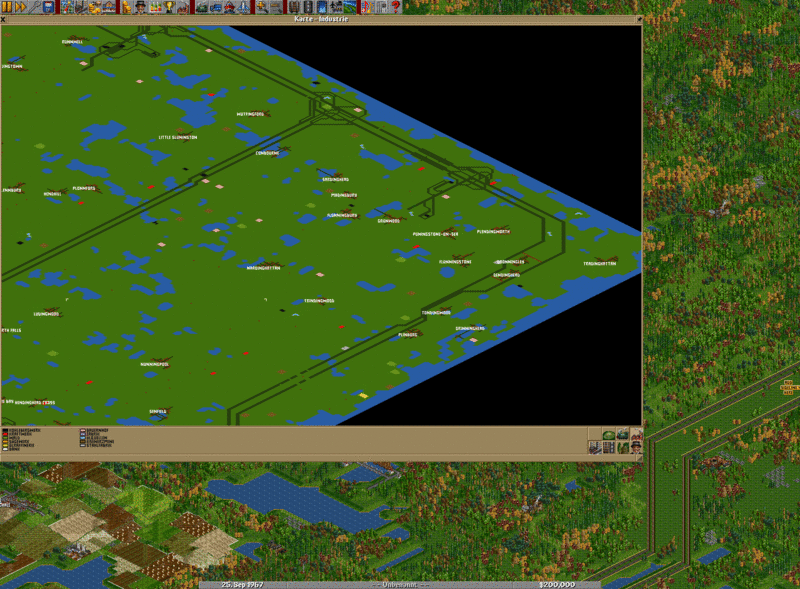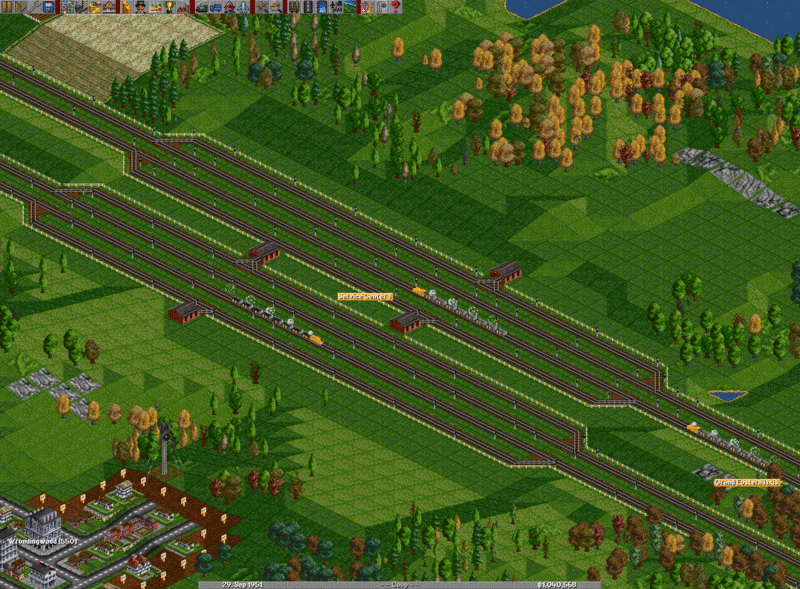Networking
From #openttdcoop wiki
After being able to build all this nice little hubs we return to some basics. Actually we demand you to do something very important before you start to build: just think about what you are doing. In the ruleset you probably read about our intention to build a comprehensive network. In a typical 512*512 game we have developed a certain networking-style. But do not misunderstand this: we do not want you to end up saying "this guys are always just doing the same with all that strict rules ....": we do not build networks one like the other! We always try to improve our building style and so the style changes.
The challenge is to invent new on the strategic level and new junctions/stations etc on the more detailed level of the game. Therefore, our game is not about doing the same things all the time but about keeping reliable network concepts and upgrade them with new ideas. But instead of writing so much theoretical things we should get back and analyze a typical network of #openttdcoop.
- On the map we see the 2x2 mainlines. On a 512*512 map we somtimes build some kind of "box" at the edges of the map. They provide some kind of a framework to our upcoming plans (note: on this screenshot only the southeastern part of the map is shown).
- Since mines/factories/plants/farms located in the center of the map are far of this "framework" of mainlines, a mainline through the center is needed. It usually leads to a giant cloverleaf in the center of the map (note: we usually try to avoid cloverleafs due to their liability to jam). On our screenshot this "cross" of central mainlines is not yet completed but you already see the central west-east axis.
- Already shown in this screenshot: two Sideline Hubs at the "Eastern Axis". You probably notice the two sidelines originating at the two SLH's and the connected stations to the sidelines.
- If you ask yourself "why the hell can't they build straight lines?!" there is an easy explaination for this: In OTTD, there are various landmark which can't be moved. Antennas (=really evil things on hills), factories/plants/farms/mines, churches (removable after some bribes -> expensive!) are such landmarks.
- This "crossed box" has proven to be a reliable concept on 512*512 maps but we are always searching for new ideas - and if we play on larger (or smaller) maps, we need a whole new concept. Unfortunately, it has shown that 1024*1024 are not yet suitable for network games (but maybe will be in the near future)
The next picture is all about depots. Since we have a massive comprehensive network of railroad tracks we have trains going all along from one side of the map to the other side and back again. Despite break-downs are disabled in our standard configuration (if you ever operated more than 100 trains on a huge network in one game you know why) there is some train developement going on in the game. Therefore, we have to upgrade trains from time to time at a railroad depot. Since we have a massive comprehensive network of railroad tracks we have trains going all along from one side of the map to the other side and back again. We can't simply build depots somewhere on the map on sidelines or even next to a station because if we do so, a "goto depot"-order will cause trains going to the nearest depot - which means: most likely jamming sidelines or stations. You probably have to trust us this time: this is a serious issue!
Mucht developed a "Service Center" in order to build depots on the mainline.
Notice:
- A train enters a depot quite slow. You have to implement some space so the train does not jam up the mainline because it enters the depot. If you look at the example picture you see some space for slowdown and even more space intended as acceleration area for the train.
- You always need a depot for every track at the mainline - if you try to save some money you risk trains moving straight forward to the next possibility to make a turn-around (which is, in a well-built network a station-area) and therefore jaming up the network instead of avoiding jams.
- Even name your service center. You know why.

